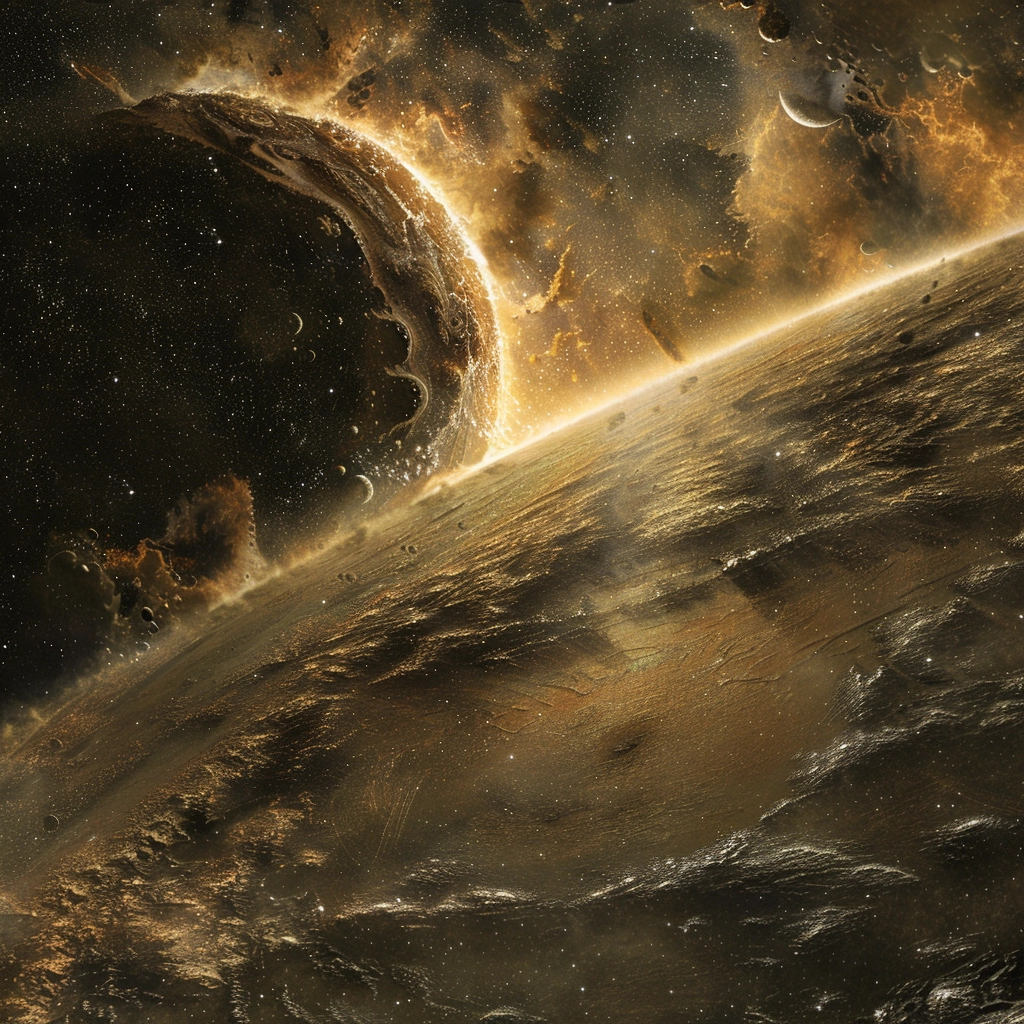Hello, fellow space exploration enthusiasts! Today, we’ll delve into the enigmatic realm of the Kuiper Belt, a mysterious region at the outskirts of our solar system. This area, teeming with countless small celestial bodies, has long been veiled from our sight. However, recent discoveries of unique objects have thrust it into the spotlight. Join us as we embark on a journey to unravel the mysteries of this distant frontier and witness the wonders it holds.
A Realm Beyond the Reaches of the Sun
Situated between 30 and 55 astronomical units from the Sun, the Kuiper Belt is a remote and isolated region of our solar system. It is home to a multitude of small celestial bodies, predominantly formed from the primordial planetesimals that encircled the young Sun some 4.6 billion years ago. These objects are the remnants of the early stages of our solar system’s formation. Most Kuiper Belt objects lack sufficient mass to evolve into full-fledged planets, remaining as dwarf planets or smaller bodies.
Unveiling the Secrets of a Veiled Frontier
For a long time, the Kuiper Belt’s extreme distance from Earth made it challenging to explore. However, recent advancements in technology have allowed us to uncover new celestial bodies within this enigmatic region, fueling increased interest and curiosity. The objects we’ll introduce here are all remarkably peculiar and captivating, leaving many in awe.
Pluto: The Gateway to the Kuiper Belt
Among the most prominent bodies in the Kuiper Belt is Pluto, once considered the sole planet beyond Neptune. Until the New Horizons spacecraft visited this dwarf planet in 2015, our understanding of Pluto was limited to artistic renditions and blurry images from the Hubble Space Telescope. The mission revealed a complex world with frozen nitrogen plains, diverse terrain, and geological activity hinted at by the honeycomb-like structures on its surface. Pluto, along with its largest moon Charon, forms a binary dwarf planet system, adding to the region’s intrigue.
Sedna and the Curious Case of Planet X
Even more intriguing are the recently discovered Sedna and 2012 VP113 (nicknamed “Biden”). These objects follow highly elliptical orbits that extend far beyond the known boundaries of the Kuiper Belt. Their unusual trajectories have led scientists to hypothesize the existence of a massive, undiscovered Planet X exerting gravitational influence from the outer reaches of our solar system. If proven, this would reshape our understanding of the solar system’s structure and dynamics.
Arrokoth: The Fascinating “Space Potato”
In 2014, the Hubble Space Telescope uncovered a peculiar object known as Arrokoth (2014 MU69). This captivating body, located within the Kuiper Belt, perplexed scientists with its unique, bi-lobed shape resembling a celestial “space potato” or dumbbell. Arrokoth’s distinct appearance offers crucial insights into the collision history and accretion processes of the early solar system. Its smooth, reddish surface, likely colored by organic compounds, further adds to its mystery.
These are just a few examples of the intriguing celestial bodies found in the Kuiper Belt, a region that continues to surprise and intrigue astronomers. As technological advancements allow for more detailed explorations, we can expect even more astonishing discoveries that challenge our current understanding of our solar system’s origins and evolution.
The Future of Kuiper Belt Exploration
Exploring the Kuiper Belt is no easy feat, with the immense distances involved posing significant challenges. It is estimated that a spacecraft would take at least a decade to reach this distant region. However, many scientists remain hopeful that direct exploration of the Kuiper Belt could unlock vital secrets about the formation and evolution of our solar system.
In the distant future, we may witness the deployment of large-scale missions dedicated solely to investigating the Kuiper Belt. Imagine spacecraft closely observing and even landing on these enigmatic bodies, collecting samples for detailed analysis. The possibilities are truly exhilarating!
As scientific advancements accelerate, we can expect the mysteries of the Kuiper Belt to gradually unfold, revealing brand new insights into our solar system and the cosmos. Astronomers worldwide are tirelessly working to expand our understanding of this enigmatic frontier, and each new discovery opens up a world of possibilities and unanswered questions.
While the 21st century has witnessed remarkable progress in space exploration, vast regions of our solar system remain uncharted and shrouded in mystery. The Kuiper Belt stands as a tantalizing challenge and a source of fascination for astronomers, promising to astound us with even more extraordinary celestial bodies and phenomena beyond our wildest imaginations.
Let us embrace our curiosity and approach the universe with the spirit of intrepid explorers. By collectively pushing the boundaries of our knowledge, we may one day unravel the remaining enigmas of the Kuiper Belt and the solar system at large. Can you feel the excitement brewing as we inch closer to unveiling these cosmic wonders?
